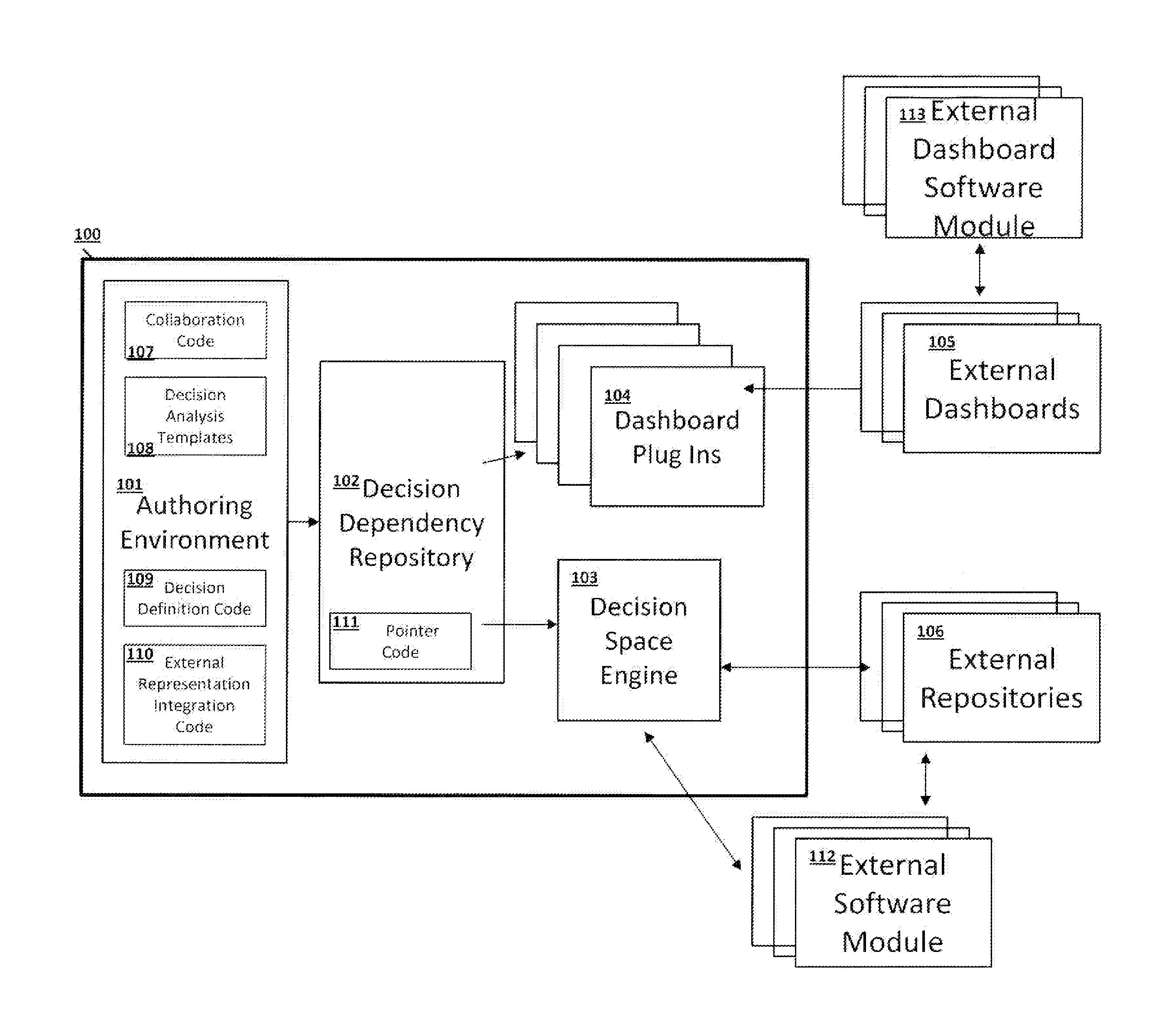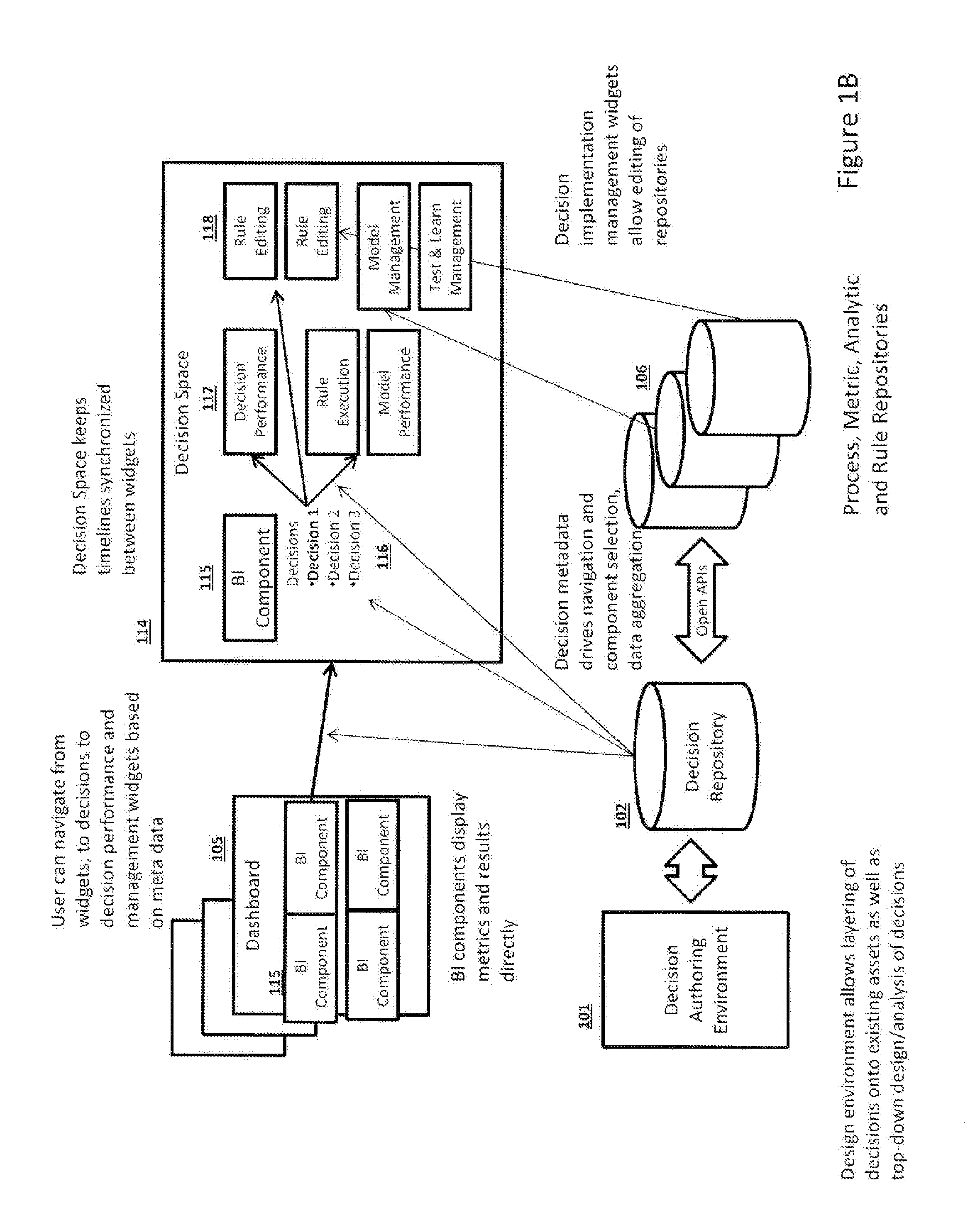System and Method for Decision-Driven Business Performance Measurement
a business performance and decision-driven technology, applied in multi-dimensional databases, instruments, data processing applications, etc., can solve the problems of not explaining why the operating margin is the operating margin, the system cannot process the invoice, and the “why” is not understood
- Summary
- Abstract
- Description
- Claims
- Application Information
AI Technical Summary
Benefits of technology
Problems solved by technology
Method used
Image
Examples
Embodiment Construction
[0029]Organizations make many decisions. Some of these decisions are one-off strategic decisions, such as deciding whether to do business in a particular country. Others are repeatable decisions that the organization or business takes more than once. For example a bank makes loan approval decisions every time someone applies for a loan; a telecommunication company makes a decision to select a particular retention offer every time a customer calls to cancel their service; and an insurance company makes a decision to pay, reject or refer a claim every time one is submitted. The invention is concerned with these repeatable decisions.
[0030]All organizations make repeatable decisions. Unlike a one-off decision it is possible for an organization to define, in advance, how it would like to make these decisions. It can define the pieces of the decision, the sub-decisions, the information that must be available to make the decision and the know-how required to make the decision. The informat...
PUM
 Login to View More
Login to View More Abstract
Description
Claims
Application Information
 Login to View More
Login to View More - R&D
- Intellectual Property
- Life Sciences
- Materials
- Tech Scout
- Unparalleled Data Quality
- Higher Quality Content
- 60% Fewer Hallucinations
Browse by: Latest US Patents, China's latest patents, Technical Efficacy Thesaurus, Application Domain, Technology Topic, Popular Technical Reports.
© 2025 PatSnap. All rights reserved.Legal|Privacy policy|Modern Slavery Act Transparency Statement|Sitemap|About US| Contact US: help@patsnap.com



